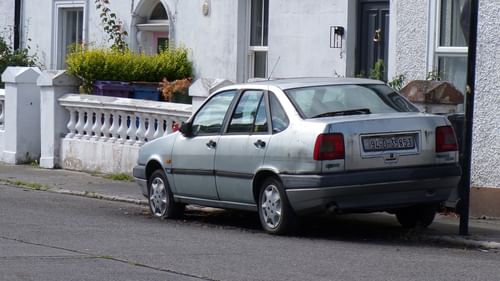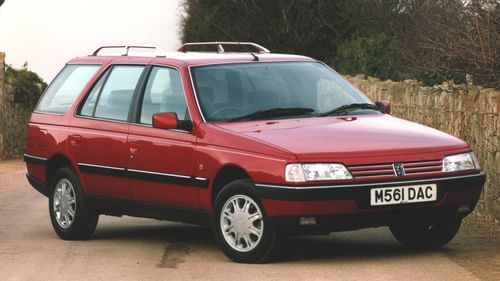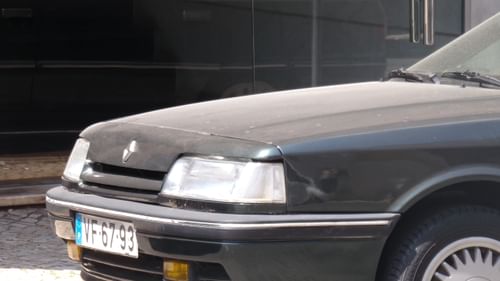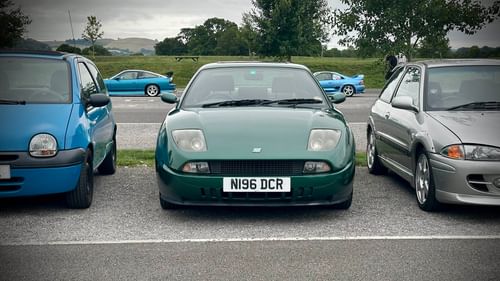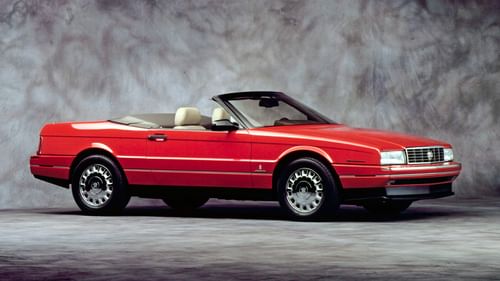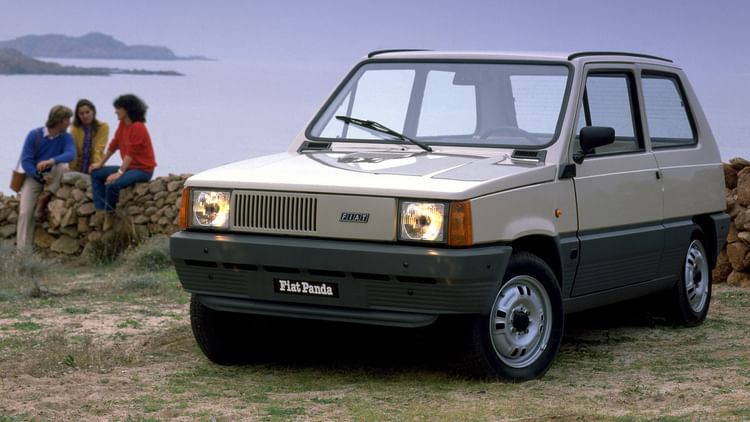
I’ve been starring at the blinking cursor on my MacBook for too long, wondering how to begin this ode to the original Fiat Panda. Seconds turn into minutes, as I sit at my desk, arms crossed, searching for inspiration.
Giorgetto Giugiaro didn’t have the luxury of time when he was tasked with designing a new small car for Fiat. ‘Giugiaro, make me a ‘French-style’ utility car which is identical in weight and manufacturing costs to the Fiat 126, but which obviously is larger and more comfortable,‘ the new CEO of Fiat Carlo De Benedetti ordered. This was in July 1976; the sketches were required after the August Ferragosto (public holiday). I’m certain the Italian master didn’t sit at his desk waiting for his tea to go cold. Instead, he headed to Sardinia, while his chief of engineering, Aldo Mantovani, remained in Turin. No pressure, lads.
‘To design the Panda, we started out from a challenge of weight and cost,’ Giugiaro said in Auto&Design in 1980. ‘It was a challenge to us: to design a car as large and multifunctional as possible whilst maintaining the same body weight levels of Fiat 126. In order to achieve this aim I eliminated all the frills from the car: the furnishing has disappeared. Flat glass has again been used, as it is more economical, and the sprung rear seats have gone; also the inner lining roof has gone, as has the guttering.‘ As a piece of industrial design, the Panda was simply brilliant and brilliantly simple. It was also hugely important for Fiat, which had seen the 126 fail to replicate the success of the Nouva 500 beyond its domestic market. That’s not to say that the 126 was a sales disaster; some 4.67 million units were produced over nearly three decades of production, although around 70 percent of these were thanks to the enduring popularity of the ‘Maluch’ in Poland. In the UK, contemporary road tests criticised the 126 for its poor packaging, questionable dynamics and high price. ‘For close to £700 we would have expected Fiat to offer something better than the old 500 done up in a new cloak,’ Autocar opined in 1973. Cloak and daggers at dawn.
De Benedetti’s reference to a ‘French-style’ utility car shouldn’t be overlooked. The Fiat Panda, named in honour of the Roman goddess Empanda, rather than the bear with a lousy libido, would enter the arena alongside chariots like the Citroën 2CV and Renault 4, two of Europe’s cheap car gladiators. With the likes of the Austin Mini, Volkswagen Beetle, Ford Fiesta Popular and Suzuki SC100 in the mix, you had a contest worthy of a 1990s television series, albeit a decade too early for Jonsson and Fashanu. The Panda had to be ready.

‘We have built a car to meet all demands,’ Giugiaro claimed. Having been presented to Sandro Pertini, the then president of Italy at the end of February 1980, the Panda was unveiled to the press just a few days later at the Geneva motor show. It couldn’t have look more utilitarian and straightforward; one could argue that it looked a little unfinished. Looks can be deceiving, because everything about the Panda was designed to tick one of three boxes: ease of construction, low price and superb practicality. In most cases, the Panda ticked all three. ‘The most amusing project I have ever been given,‘ Giugiaro claimed, whose CV included everything from the Lotus Esprit to the Hyundai Pony. ‘To have all that space and practicality enclosed in 3.38 metres was a most exciting challenge. It had to be a brake (estate) car, giving the lie to the car as a status symbol.‘ An important consideration in an increasingly affluent society, especially in the UK, where drivers were more reluctant than the Italians or French to embrace basic cars.
If space is the ultimate luxury, the Fiat Panda is a little limo. Though short in length, the Panda’s tall stance meant that headroom was extremely generous; in this respect the Fiat was head and shoulders above the Mini. The use of space-saving thin seats maximised space in the cabin and proved to be useful when clambering into the back; the Panda was three-door only to reduce weight and maximise strength. Once in the back, you’d discover one of the Panda’s most ingenious features: the rear bench. Using a kind of deckchair approach that wouldn’t look out of place on a spiaggia, the Panda’s back seat was little more than a single piece of elasticated canvas and two transverse tubes. It meant that the rear of the Panda could be configured in several different ways. Tonight, Matteo, I’m going to be a delivery van, small camper, estate car, lifestyle vehicle, supermini and baby’s cot. Autocar called it ‘a remarkable little station wagon‘. Sensibly, Fiat UK played down the use of the rear seat as a baby carrier, opting to promote it as a bottle or bag carrier. Crashworthiness wasn’t a Panda strength, so leaving a bambino to sleep in a V-shaped hammock was far from ideal.
The dashboard, if you can call it that, was little more than a fabric-trimmed bulkhead with a storage pouch running the full width of the car. A removable ashtray could be attached anywhere along the tubular crossmember, which was designed to cushion the knees in the event of an accident, while all of the instruments and controls were housed in a single pod positioned in front of the driver. The exposed metal, painted the same colour as the outside to save cost, was part of its charm. Few Panda owners would have noticed the simple headlining (two pieces became a single unit in 1982) which simply popped into place.

On the outside, the lower parts of the bodywork were coated with a thick polyester-resin coating, said to be 10 times tougher than paint. Not only did this stay true to the Panda’s no-frills approach, but it also served to reduce the amount of sheet metal on display, making the little Fiat appear less lofty than it actually was. Some exposed hinges, flat glass, a single wiper and drip channels replaced by welded seams are further touches designed to keep production costs to a minimum. Even the grille was a cost-saving measure; it could be mounted on one side or the other, depending on whether power was sourced from the Fiat 126’s 652cc two-cylinder engine in the Panda 30 or the 127’s 903cc unit in the Panda 45. A corporate black grille was introduced on the Panda Super in 1983, before being rolled out across the range in 1984. By then, Fiat had taken the Panda off-road by launching the 4x4. Developed by Steyr-Puch, the Panda 4x4 featured a 965cc four-cylinder engine from the Autobianchi A112, a five-speed gearbox and a floor-mounted lever for selecting four-wheel drive. It was, at the time, the cheapest 4x4 you could buy, and the first genuine alternative to a large and expensive off-roader. It became a familiar sight on the slopes of St. Moritz and the hills of Tuscany, although What Car? claimed it could have benefited from the styling of the Matra Rancho. Italian hill farmers weren’t buying that…
Of the standard Panda 45 (the 30 was never imported into the UK), Autocar said: ‘Considered as basic motor car, and not as anything more ambitious, this new Fiat is distinctly clever in some ways, amusing and entertaining in others, and an interestingly different approach to the question of how to provide a reasonable minimum on four wheels.’ Giugiaro is on record as saying the Panda is his favourite design, a view shared by Giovanni Agnelli. The Fiat supremo owned no fewer than 40 Pandas, including a series of custom-built examples for use at his many residences. The unfortunate thing is that so few remain, with the Panda Mk1 falling victim to inadequate rustproofing and its very nature as cheap and disposal transport. The Panda Supernova, produced from 1986 until 2003, is easier to source, but it lacks the design purity and charm of Giugiaro’s original. As a piece of industrial design and an example of answering a brief, the Fiat Panda Mk1 is one of the greatest cars of the 1980s. It’s crazy to think that Giugiaro probably finished his initial sketch in the time it has taken me to write 1400 words. What’s Italian for ‘blinking cursor’?
This article first appeared in the first issue of Classic.Retro.Modern. magazine.
